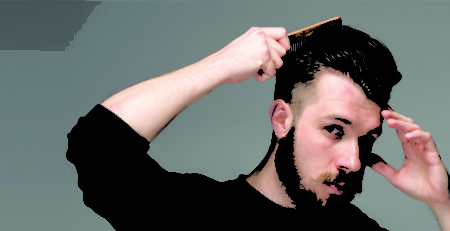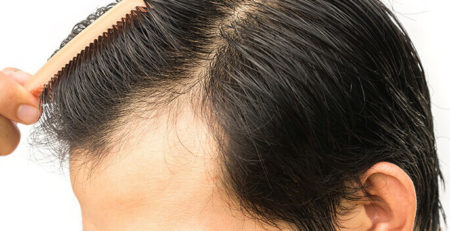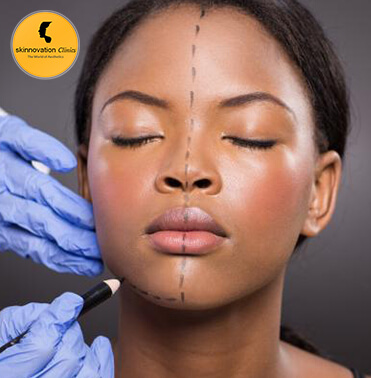Along with being the most commonly known cosmetic surgery procedures, hair transplant is a very promising technique that offers a permanent solution to balding. Many men and some women also suffer from hair fall, the primary reason for which is hereditary, the genetic history going up to three generations either on the mother’s or father’s side. Though medical treatments are available, they work only in the early stages of balding and even if taken regularly, medicines cannot ever give you a head full of hair. So once hair is beyond the restoration stage, a hair transplant surgery serves as the only long-lasting solution. It has no side effects and the transplanted hair stays for life; it never falls and needs subsequent haircuts.
Even though it’s one of the most popular cosmetic surgery procedures, there are many misconceptions revolving around the hows, whys and whats of a hair transplant surgery and more often than not, patients are misguided about the most suitable procedure for them or the type and aftermaths of surgery; because believe it or not, every Tom, Dick and Harry is running a cosmetic surgery clinic these days and you’ll come across a hoarding offering a hair transplant surgery at almost every crossing.
Lack of reliable sources of information and uncertainty about the qualification of the surgeons makes it important that one should be abreast with the science behind hair transplantation, the different techniques available, the surgical procedure involved and the aftermaths of the surgery before opting for one.
Let’s tackle each one by one and provide you with a wholesome picture of the surgery so that you can make a well-informed decision with no regrets!
All of us have a zone of hair at the back and sides of our scalp that is unresponsive to male hormones which makes it permanent i.e. it never falls. In a hair transplant surgery, these permanent hair follicles are redistributed to the balding areas where they grow as normal hair. It does not look different from natural hair in terms of colour, texture and direction of growth. You can comb it, oil it, shampoo it and even shave it!
There are two techniques for hair transplantation, namely: Follicular Unit Transplant (FUT) or Strip method and Follicular Unit Extraction (FUE) method.
In the FUT technique, a strip of hair-bearing tissue is excised from the permanent donor area at the back of the scalp and a team of 4-5 expert surgeons uses a microscope to dissect each naturally occurring hair follicle from this strip very delicately, without damaging any hair root. With a decent strip one can easily harvest 2300 to 3500 follicles. These follicular units are then placed into tiny incisions made at the bald areas at the same angle and direction as the original hair. This results in a natural-looking growth of hair even after one session of surgery. At the same time donor area is stitched by a special plastic surgery technique called Trichophytic Closure that merely leaves a very thin and well-camouflaged linear scar, allowing patients to easily keep their hair short cropped also.
In the second procedure, called FUE, the permanent hair on the scalp is trimmed and each follicular unit is excised directly from the scalp and is transplanted to the balding regions. In comparison to FUT, this procedure is relatively blind and chances of damaging the roots while extraction of follicles stand at 5-10% resulting in wastage of grafts available for transplant. But since this procedure does not involve any incisions in the scalp, it results in a slightly less post-operative discomfort and leaves no linear scars. However, since it decreases the hair density in the donor area, it is only recommended to harvest one third of the follicles from it. Extracting more than that would result in sparse hair at the back of the scalp and the small round puncture scars would become noticeable.
Body-to-scalp FUE i.e. excising body hair follicles can also been utilised when the patient has insufficient donor hair density in the scalp. Though the survival of these hairs is significantly less than scalp hair, these are a good solution for camouflaging donor scars or adding density behind hairlines that are created with finer hairs. But the growth cycle, texture, characteristics of body hair can never match with those of scalp hair.
Both the techniques have their advantages and no one can be termed as superior to the other. They are patient specific and are employed based on the requirement of the patients. Sometimes even a combination of the two is used in order to achieve the best possible long-term results. One can safely say that both the methods are equally scar less if done properly and if not, both can leave remarkable marks…
Furthermore, since the number of hair follicles in the permanent donor area varies and every individual has a fixed number of these, there is no such thing as ‘unlimited follicles’. So beware of the advertisements that lure you by promising a scar less, no cuts surgery with unrestricted follicle transplant. They might expunge these from the areas above and below the donor area. These hairs are not permanent and would fall off. Also, no surgery is free of scars; if not linear, extracting follicles would lead to round scars; the trick is to conceal them as best as possible.
Coming to the surgical procedure, the transplant is done under local anaesthesia on an outpatient basis. The patient stays awake throughout and can watch TV, listen to music, and even take lunch during the break; and goes home immediately after the procedure which, depending on the balding area and number of follicle units transplanted, usually takes approximately 2–6 hours.
All the transplanted hair fall off within the first month of surgery, and start to grow back again after a rest of another1-2 months. The regrowth rate is around 1 cm per month and hence a waiting period of around 8 months is required to finally appreciate the results of a hair transplant surgery. The hair that grows back is permanent and would grow back even if one shaves his entire scalp.
So before going for a hair transplant, discuss all the possibilities with your surgeon and choose a technique that is best suited for and tailored to your needs. And make sure that you never, never, never give up on your hair!







